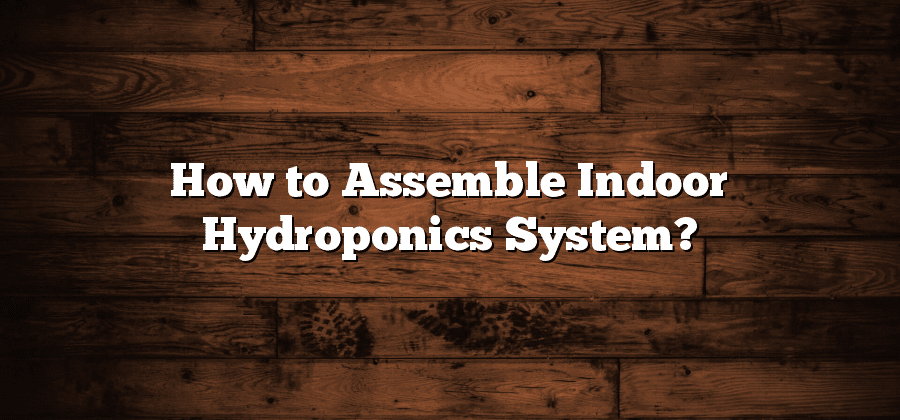Understanding the Basics of Hydroponics
Hydroponics, a popular method of growing plants without soil, is gaining momentum as a viable alternative to traditional gardening. With this technique, plants are grown in a nutrient-rich water solution, allowing them to absorb precisely what they need for optimal growth. By bypassing soil, hydroponics offers numerous advantages, including faster growth rates, higher yields, and the ability to grow plants in areas with limited space or poor soil quality.
One key principle of hydroponics is the use of a growing medium to support the plants. Common choices for the growing medium include perlite, coconut coir, or expanded clay pellets. The growing medium acts as a replacement for soil, providing stability for the roots while allowing the nutrient-rich water to flow effortlessly around them. This efficient system ensures that the plants receive the necessary nutrients, water, and oxygen, promoting healthy root development and vigorous growth.
Choosing the Right Indoor Hydroponics System
There are several factors to consider when selecting the ideal indoor hydroponics system for your needs. Firstly, you should take into account the space availability in your home or indoor facility. Determine whether you have the room for a small, compact system or if you can accommodate a larger setup. Additionally, consider the type of plants you intend to grow and their specific requirements. Different plants may thrive best in different types of hydroponic setups, such as deep water culture, nutrient film technique, or aeroponics. Researching the specific needs of your chosen plants will help you in choosing the right system for optimal growth and yield.
Secondly, consider the resources and budget you have available for your hydroponics venture. Some hydroponic systems can be quite costly to set up and maintain, particularly those that rely on advanced technologies such as automated nutrient dosing or lighting systems. It is important to assess your financial capabilities and technological expertise before investing in an elaborate indoor hydroponics system. Remember, a more expensive system does not necessarily equate to better results. With careful planning and consideration, you can find a system that strikes a balance between functionality and affordability, ensuring successful cultivation of your chosen plants.
Selecting the Ideal Location for Your Setup
When it comes to setting up your hydroponics system, one of the crucial factors to consider is the location. Selecting the ideal location can greatly impact the success of your setup. Firstly, you want to ensure that the location provides sufficient access to natural light or artificial lighting. This is essential for the growth and development of your plants. Ideally, the spot should receive at least six hours of direct sunlight per day or be equipped with efficient grow lights that can mimic sunlight. Assess the available space and determine if it meets the lighting requirements of the specific crops you intend to grow.
Secondly, consider the temperature and humidity levels of the chosen location. Most hydroponic plants thrive in temperatures ranging from 65 to 75 degrees Fahrenheit. It is important to choose a spot that can maintain a consistent temperature within this range. Excessive heat or cold can negatively impact the growth and yield of your plants. Additionally, check that the humidity levels are suitable for the chosen crops. Some plants require higher humidity, while others prefer lower levels. By carefully considering the temperature and humidity conditions of the location, you can create an optimal environment for your hydroponic system.
Assembling the Frame and Structure of the System
When it comes to assembling the frame and structure of your hydroponics system, attention to detail and precision are crucial. The frame serves as the skeleton that supports the entire setup, so it is essential to ensure its stability and durability. Start by gathering all the necessary materials, such as PVC pipes, connectors, and zip ties. Lay out the components and double-check that you have everything before proceeding.
Begin by constructing the base of the frame using the PVC pipes and connectors. Make sure to measure and cut the pipes accurately to achieve the desired dimensions. Connect the pieces together tightly, securing them with zip ties for added stability. Once the base is complete, move on to building the vertical supports and cross beams. Again, take precise measurements and use connectors to join all the components securely. Ensure that the frame is level and balanced before moving forward with the rest of the assembly process.
Installing the Water Pump and Reservoir
One crucial step in setting up your indoor hydroponics system is installing the water pump and reservoir. The water pump is responsible for circulating the nutrient-rich water solution throughout the system, ensuring that your plants receive the necessary nutrients for optimal growth. To begin, carefully choose a water pump that is suitable for the size and requirements of your hydroponic setup. It is essential to select a pump with sufficient power to deliver the water and nutrients to all the plants in your system efficiently. Once you have the appropriate water pump, it is time to position it correctly within your hydroponic setup. The placement should allow for easy accessibility and ensure that the water can be distributed evenly to all the plants. Furthermore, the water pump should be securely fastened to prevent any shifting or movement that could disrupt the proper functioning of your hydroponics system. Properly installing the water pump is a critical step towards maintaining the success of your indoor hydroponics system.






